Public-Private Partnerships
Partnerships between private industry and government have been instrumental in achieving various milestones. For instance, the electrification of rural parts of America was possible primarily due to such partnerships. Public-private partnerships offer numerous benefits, including more options, greater efficiency, and shared/lesser risk. This is why these partnerships have gained popularity in financing the expansion of broadband services. It is well-known that the internet and internet-connected technologies have become immensely popular in recent decades.
So, What is the Problem?
It’s worth asking why, despite the high demand for the internet and internet-enabled technologies, private businesses haven’t already provided affordable high-speed internet to every member of the community. If expanding access to broadband is such a great idea, shouldn’t there already be at least one private business offering an affordable broadband service in the community?
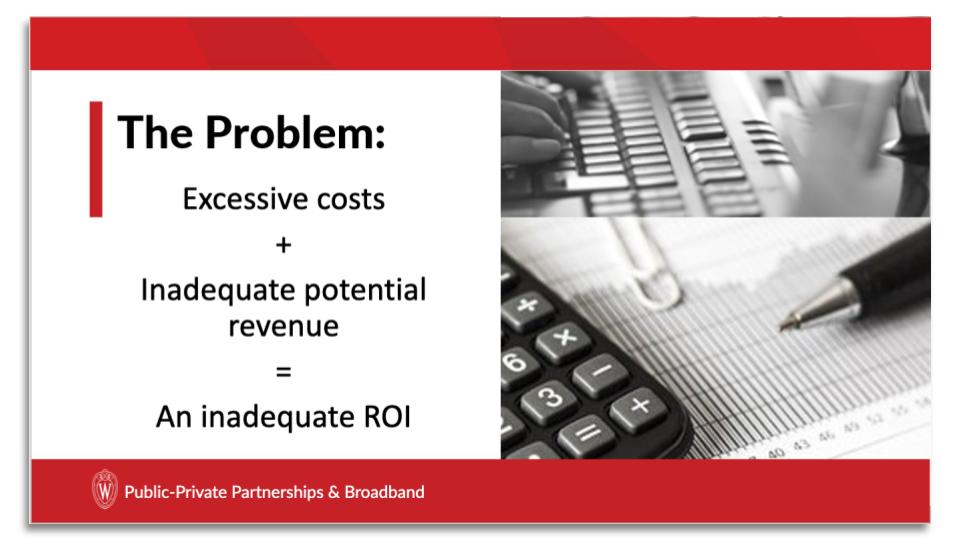
Your investment in this work proves that the assumption of private industry neglecting the unserved and underserved areas is incorrect. The most common reason behind this neglect is simple economics. Building the necessary infrastructure costs are very high, and the potential revenue from these areas is inadequate. When we combine these two factors, the result is an insufficient return on investment. These reasons are the primary cause behind the private industry’s reluctance to build out into these areas as part of their business models.
This lack of a return on investment (ROI) leaves a funding gap. Unfortunately, this situation is unlikely to change unless we can find ways to utilize targeted public financial resources to help with the investment in deploying broadband infrastructure. The missing piece of the puzzle is public financial support, which is why we need to partner and create a win-win situation for the providers and communities.

The problem at hand is the cost to deliver services to remote rural areas with low population density, which is often much more than in urban areas. However, this doesn’t mean that all urban areas have adequate broadband service. In low-income areas, the take rates are often low, which discourages private investors. Therefore, communities require assistance to figure out how to make broadband in rural areas profitable. To achieve this, federal, state, and local resources may be needed to bridge the funding gap.
What is included in a Public-Private Partnership?
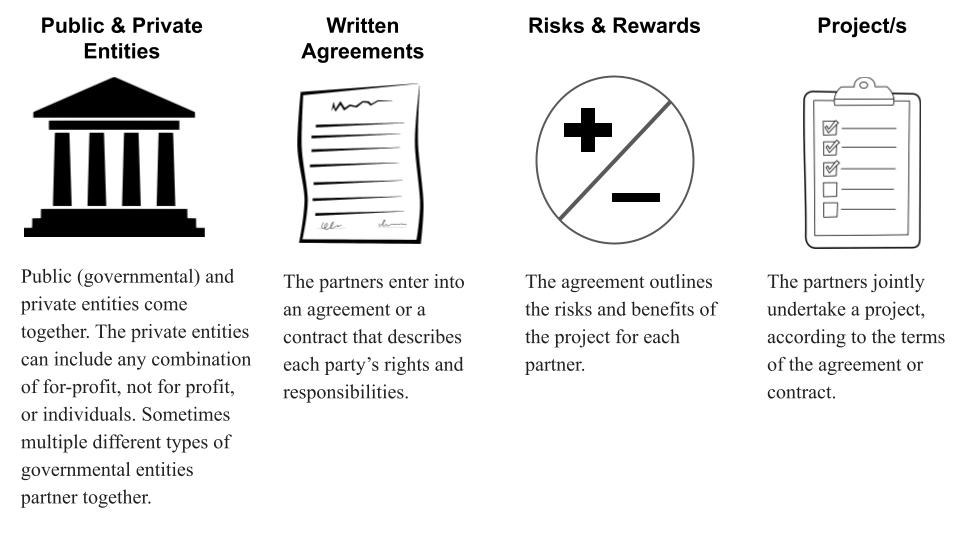
Reasons for Partnership
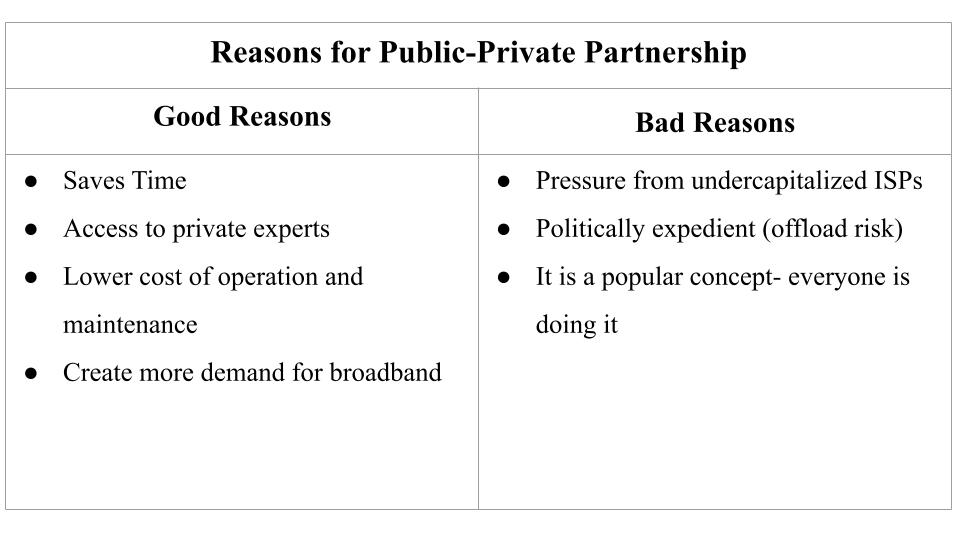
There are many good reasons to use a public-private partnership, such as giving you access to private experts and lowering the cost of operations and maintenance. There are also some bad reasons, such as pressure from undercapitalized ISPs and politically expedient (offload risk).
How do you find Private Partners?
A few things to consider before you begin:
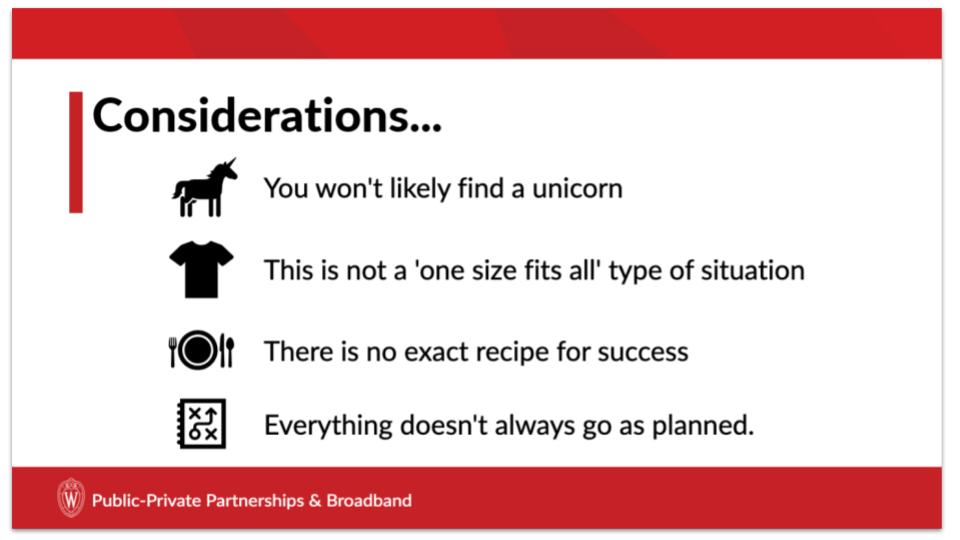
Before looking for or engaging in partnerships, it is important to consider a few things. Firstly, it is unlikely that you will find your perfect partner – your unicorn. Secondly, partnerships are not one-size-fits-all and require effort to build and maintain. Thirdly, there is no exact recipe for success – what worked in another community may not work in yours. Lastly, you have to be mindful that everything doesn’t always go as planned. Public-private partnerships are like being in a relationship – and patience is sometimes required. For example, there may be factors out of your control that can cause delays or disruptions, and it’s not always fair to get angry with your partner(s) for things they cannot control.
Identifying Private Partners

- Identifying ISPs. Your team likely knows many ISPs operating in the community and adjacent areas. To help make sure your list is as complete as possible. The FCC broadband map has a list of providers that self-reported that they are providing service by location. Don’t forget to use what you have learned from your own mapping, data, and community engagement that could help you determine which ISPs to contact. This can help you identify regions to concentrate on, which can help you identify which ISPs to concentrate on based on their coverage area. This should be closely related to the goals your team has already identified.
- Looking beyond current/incumbent providers. The team should also consider ISPs operating within a few miles of the community’s boundaries. These businesses may be open to expanding service, provided they receive some sort of public support.
- Finally, the team needs to contact any ISP that has received or has funding pending from a federal grant or loan program.
- Reach out to those on your list to begin to get an idea of who might be interested in exploring a partnership – we have created a template that can help with this initial contact.
- Schedule a separate meeting with each ISP who expressed interest from your initial contact to determine if a partnership is possible. You can use our conversation guide to take notes for each ISP so you can compare responses and consider how each ISP would help you meet your goals. Making these initial contacts helps to:
- Make them aware that the community is interested in expanding broadband access and is looking for partnerships.
- Give them adequate time to investigate ideas and possible plans for expansion they may wish to share
Putting it Into Practice: Tips for Public-Private Partnership
- You may have more than one partnership at one time.
- Each partnership can have a lot of variations.
- Outline who is responsible for what and KNOW THE RISKS.
- Consider what kind of partnerships will serve the community best.
- This is a relationship – be patient in these relationships.
- You are not obligated to partner with anyone who shows up at your door.
Resources
Download the resource sheets below to access a template for an email or letter to contact ISP, a helpful guide to get the conversation started, and a breakdown of the roles and responsibilities in the Public-private partnership structure.
Worksheets
Download the [case study handout] and the worksheets below to learn how to identify and utilize public and private partner resources while considering community culture for a successful partnership for your community.
Adapted from National Digital Education Extension Team (2022)



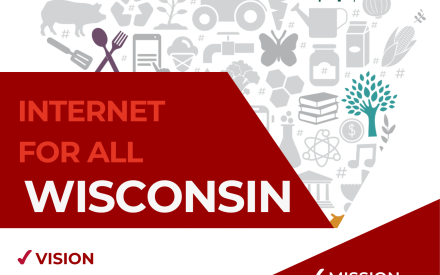


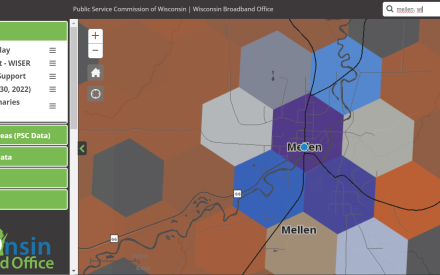


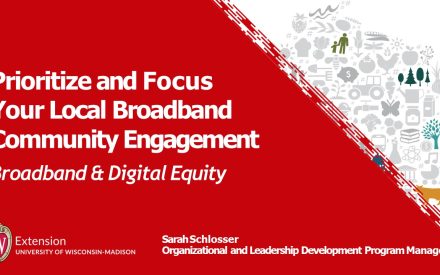

 What's Next in Wisconsin Broadband, December 2025
What's Next in Wisconsin Broadband, December 2025 Broadband Expansion in Wisconsin: Case Studies - Page 3
Broadband Expansion in Wisconsin: Case Studies - Page 3


